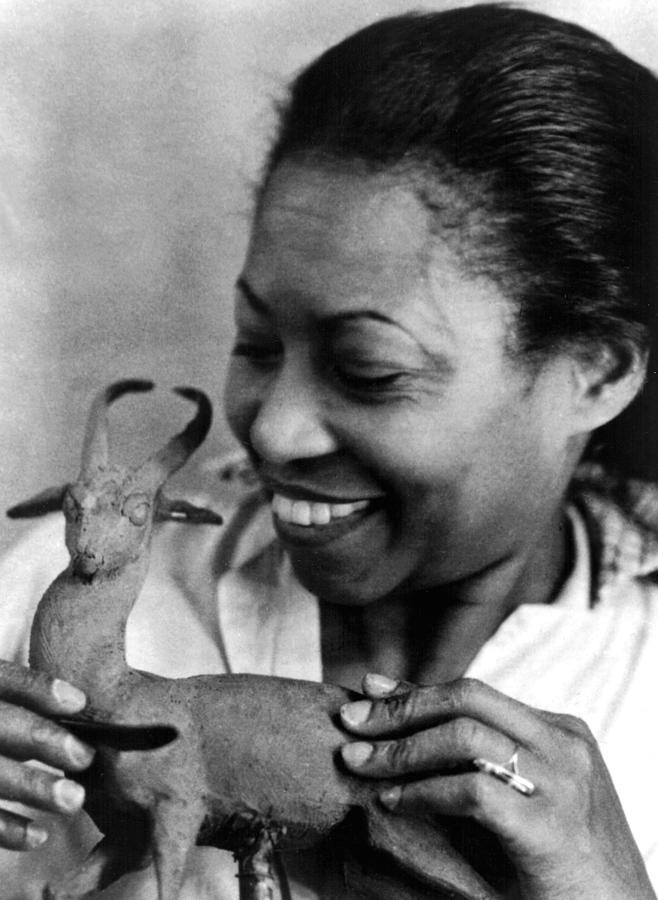Cummer Museum to host Augusta Savage exhibit
JACKSONVILLE – Work by African-American art trailblazer, educator and Green Cove Springs native Augusta Savage is coming to the Cummer Museum of Art and Gardens next year, and with it the unique …
This item is available in full to subscribers.
Attention subscribers
To continue reading, you will need to either log in to your subscriber account, or purchase a new subscription.
If you are a current print subscriber, you can set up a free website account and connect your subscription to it by clicking here.
If you are a digital subscriber with an active, online-only subscription then you already have an account here. Just reset your password if you've not yet logged in to your account on this new site.
Otherwise, click here to view your options for subscribing.
Please log in to continueDon't have an ID?Print subscribersIf you're a print subscriber, but do not yet have an online account, click here to create one. Non-subscribersClick here to see your options for subscribing. Single day passYou also have the option of purchasing 24 hours of access, for $1.00. Click here to purchase a single day pass. |
Cummer Museum to host Augusta Savage exhibit
JACKSONVILLE – Work by African-American art trailblazer, educator and Green Cove Springs native Augusta Savage is coming to the Cummer Museum of Art and Gardens next year, and with it the unique opportunity to examine the legacy of a Civil Rights pioneer and prolific sculptor.
The exhibition, which will be on display between October 2018 and April 2019, assembles sculptures from various public and private collections from across the United States from Savage’s prolific career.
Savage was born in 1892 as the seventh of 12 children and the daughter of a fundamentalist preacher. She used native clay to feed her growing curiosity for the artistic medium as she grew.
Savage moved to New York City in the 1920s to pursue higher education and a career in art that she couldn’t kick start in Jacksonville.
There, she became a key artistic figure in the Harlem Renaissance – the African-American literary and artistic movement of the 1920s and 1930s named after the location it began.
She would go on to influence students until her death in the early 1960s.
“I think her legacy is incredibly important, not only because she was a fantastic artist, but she was also combatting both sexism and racism in order to achieve her goal of becoming an artist,” said Holly Kerris, Cummer Arts Museum chief curator. “She in many respects was not as concerned about her legacy as she was with providing opportunities for those who would come after her. This combo roll of artist, educator and community activist I think is something that still has profound relevance today.”
The exhibition will contain two pieces already on display in the museum, including one in the personal collection of the museum’s namesake founder.
Despite her prolific work, Savage’s death came with little fanfare recognition. Small gestures in the county have been made to recognize her accomplishments.
The former segregated Dunbar High School, which was built on land donated by Savage for use for the first and only black high school in Green Cove Springs, has been converted into the Augusta Savage Arts and Community Center. The center houses sports and health programs for area youth.
The city also holds a festival named after her.
“When you think about it, she’s one of the most significant black artists of the time period called the Harlem Renaissance – she was one of the architects,” said African-American Historian Eugene Francis of Green Cove Springs. “You can see the type of influence she had. All these people were seeking her out for her counsel and help, and to think that was a little girl from Green Cove Springs.”
In the 90s, directors with the Cummer Museum called Francis in to help authenticate a piece of Savage’s work they had acquired called The Diving Boy. It was around that time when the Cummer last featured Savage. Francis said the exhibition was well attended by both residents and Green Cove Springs City Council members.
“Pieces that she made are very evocative of European artistic traditions, but she also during these early years in her career would start to incorporate Afro-American identity, and that’s really something that she helped her students do as well,” Kerris said.
Kerris said while the museum doesn’t often set out to exhibit regional artists, that the Augusta Savage exhibit offers a unique chance to showcase both area and national history.
The Cummer Museum permanent collection displays pieces spanning from Ancient Egypt to contemporary work, with exhibits that rotate through the museum.
The museum is free to visitors on the first Saturday of the month and Tuesdays for visitors.
Francis said Savage’s influence is still felt today in the students she mentored.
“Augusta Savage was not the most beautiful woman in the room, but when she came into the room, she brought a light and a fire,” he said, quoting former student and noted African-American Psychologist Kenneth Clark.








